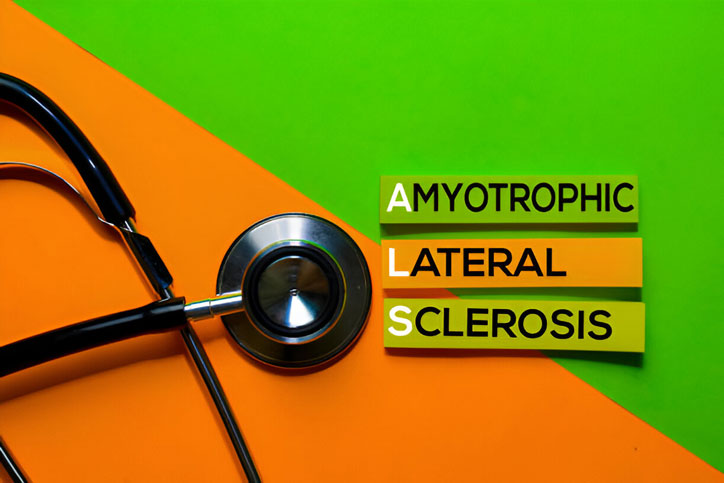ALS is short for amyotrophic lateral sclerosis, also known as Lou Gehrig’s disease. It is a very rare neurological condition that leads to an inability to control voluntary muscles. An ALS diagnosis can make a person feel hopeless since there is no cure. While the life expectancy of a person after being diagnosed with ALS is two to five years, many people live with ALS for even longer. While no cure currently exists, many treatments help improve patients’ quality of life and help patients to deal with this difficult diagnosis.
ALS is a progressive disease which means once diagnosed, the patient’s condition will continue to worsen. ALS affects the nerve cells in the brain and the spinal cord, ultimately leading to a loss of muscle control. While some cases run in families, other ALS cases pop up sporadically without any clues as to why they occurred. The symptoms of ALS vary from person to person. Although some common symptoms tend to be present in most cases. These include difficulty walking, tripping, weakness in feet and ankles, clumsiness, slurred speech, inappropriate laughing or crying, and cognitive-behavioral changes.

Patients with ALS notice their symptoms beginning in their legs and feet and spreading to the rest of their body. As the condition progresses, eventually the ability to chew, swallow, speak, and breathe is lost. While treatment cannot reverse the damage of ALS, it can slow the progression of the disease, thus giving patients a longer life expectancy. On a physical level, medication, breathing therapies, physical therapy, occupational therapy, and speech therapy can all help improve the quality of life and slow the progression of the disease. However, if you have been diagnosed with ALS, having a psychological team to help you work through the emotions that come with the diagnosis is key to ensuring your treatment is effective.
In recent years, stem cell therapy has shown a lot of promise in helping ALS patients as well. There is a significant amount of research and money behind finding a cure for ALS. While no cure currently exists, treatments such as stem cell therapy can greatly help patients throughout the course of the disease. Stem cells can help repair and regenerate damaged neurons, thus greatly slowing the progression of the disease, and even repairing some of the damage the disease caused.
Dealing with an ALS diagnosis can be very difficult initially. There is usually a level of shock accompanied by some feelings of hopelessness and despair. However, it is important to remember that while there is no cure, new therapies and treatments are emerging every day, such as stem cell therapy. Patients diagnosed with ALS go on to have many good years, especially when following a strict treatment regimen with a solid group of physicians. New research has shown the benefits of stem cell therapy for ALS patients and has given these patients more hope than ever before. One day, there is hope that a cure for ALS will exist in the near future.











No Comments